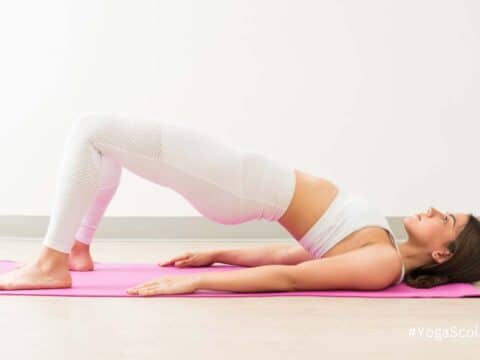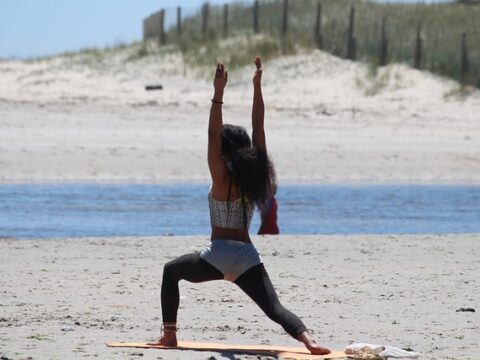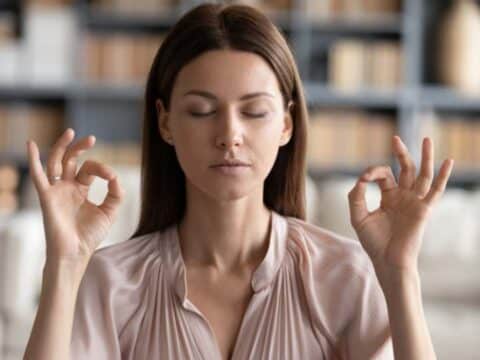The better we become at yoga, the finer our intuition naturally becomes. This ability is largely absent in our modern world, but it is an important tool to develop. By practicing yoga, we cultivate our intuition and instinct, which are essential to following our heart.
To cultivate our intuition, we practice breathing techniques that open our chest and address our core.
Our intuition is an active awareness of our immortal self. It is the third eye of wisdom. Sages and yogis use their intuition to perceive everything in their environment, including things we cannot see.
This ability allows us to know that everything is in our body and that our perceptions are a reflection of the invisible Presence.
Podcast
Practicing intuition requires patience, compassion, and a commitment to yourself. But the rewards are worth the effort. Intuition can help you make wise decisions.
Properly practiced, it can help you find your way through any situation. For example, you can use your intuition to figure out which foods are right for you.
Intuition through yoga meditation?
Yoga meditation is a practice that focuses and directs your energy in one direction. It is usually practiced first thing in the morning or before bed, although you can practice it at any time of the day.
This form of meditation is based on the repetition of mantras, which are phrases that you repeat silently in your mind or aloud. The words are often a phrase of affirmation.
The practice of yoga is a way to balance the mind and body, connect a person with nature, and achieve harmony in life. It is also an ancient philosophy based on connecting our individual consciousness with universal consciousness. This practice involves silencing our minds and focusing on the present moment.
Yoga meditation draws its inspiration from many sources, including internal tantra, Vedanta, and various other teachings.
One of the greatest benefits of meditation is its ability to channel emotional energy and reach a level of self-awareness that helps the practitioner cope with stressful situations.
The benefits of yoga meditation
Yoga meditation is a form of mindfulness practice where you sit or lie comfortably and let your thoughts wander without judging them. This meditation helps you to strengthen intuition
You often practice yoga meditation in a class with a teacher, but you can also try it on your own. Some people also use guided meditations to get in the right mood.
Yoga meditation is a great way to gain mental clarity and emotional balance.
Does meditation, enhance intuition?
There are numerous reasons to meditate. The practice of meditation has been practiced for thousands of years, but did not find widespread acceptance until the 1960s, when it was influenced by mystical ideas about the merging of mind and body.
To many people in the West, sitting still and not thinking seemed strange, but in recent years health experts and celebrities have encouraged people to meditate.
It can help people become more connected to themselves and more peaceful. It can also develop a disciplined mind. Research shows that meditation can reduce stress, anxiety and a variety of physical and mental health problems. Meditation also strengthens courage, which is important in times of uncertainty. In addition, meditation improves self-image and intuition.
Meditation can be practiced in many different ways, depending on the individual. People may practice it in a formal setting, while others may prefer to incorporate it into their daily routine.
Regardless of how you practice, the main purpose of the exercise is to become aware of your thoughts. Meditation does not rid the mind of thoughts, but it does allow you to become aware of them and use them to control your life.
Different types of meditation
Different types of meditation and yoga can be practiced to improve intuition. To get the most benefit from meditation, you should combine techniques according to your own needs.
Some types of meditation require you to sit still for an extended period of time.
For example, in zazen meditation, you count backwards from 10 as you inhale and repeat the same count as you exhale.
Chakra meditation is a popular type of meditation where you learn to focus on different parts of your body.
The goal of this type of meditation is to become more aware of different body sensations and to release tension. It can be practiced while sitting or lying down and is usually recommended before bedtime.
Alternatively, you can try gaze meditation, which trains your concentration and visualization skills.
Yoga poses for intuition
Practicing yoga poses for intuition is a great way to improve your connection to your body and increase your intuitive abilities.
The exercises also help improve your circulation and promote a positive mood. They can also lead to a clearer view of the world, allowing you to see things more clearly.
Some of the poses also have metaphorical value, such as the tree pose, which can help you understand the qualities of a tree, such as the strength of its core.
The interlocked hands pose connects the right and left hemispheres of the brain. This pose helps balance the energy in the body and opens the channel between the heart and the head.
It encourages trusting your inner wisdom and is especially helpful in stressful situations. You can also use this pose to open your heart and connect with your spiritual soul.
If you want to practice yoga for intuition, it is important that you choose a teacher with whom you feel comfortable. Tell your teacher that you are working on developing your intuition during your practice and ask for their advice when needed.
By communicating openly with your teacher, you will avoid feeling insecure or afraid of hurting them.
Also, be sensitive to the postures and positions of your fellow yogis. If you feel they are distracting you, try to position yourself in a less visible part of the room.
During your yoga practice, pay special attention to alignment. As you practice each posture, remember to follow the correct alignment. Then let your intuition guide you through the poses.
Yoga Poses to Strengthen Intuition
Before trying new exercises, always follow the instructions of a certified yoga instructor or physical therapist to avoid injury.
The Tree (Vrksasana)
Learning the yoga tree pose is an important part of any yoga practice. The pose can help you build core strength and balance and develop a more relaxed posture. This powerful pose strengthens intuition.
Once you master the basic pose of Tree Pose, you can move on to more advanced variations. These variations will challenge your core strength and your ability to control your movements.
Those who have trouble with balance may want to modify the pose. Start by placing your left foot lower on your right leg. Alternatively, place it on your right ankle and keep your left toes on the ground.
If you are still having trouble with balance, you can hold onto a wall for support. Leaning your butt against the wall and rotating your left knee toward the wall can help you stay upright.
If you’re looking for more advanced options, try the bound tree pose. Raise your right foot beyond your left thigh. This will stretch your right side of your torso. When you finish this variation, you can move into a Standing Forward Bend with Half Lotus.
Low Lunge (Anjaneya)
Ajaneysana, also known as Moon Sickle Pose and Ashwa Sanchalanasana, is a back-bending asana in modern yoga. It is an excellent exercise that is especially good for the lower back. The pose is also commonly used for meditation.
The pose is challenging, but it is incredibly restorative. Try it before an important meeting or a long day at work.
It’s a great way to stretch your legs, arms, and upper body, making it ideal for anyone who needs a little extra energy in the morning. To make this pose easier, place a pillow under your back knee.
The low lunge is a popular yoga pose that targets tight quadriceps, hamstrings and lower legs. Runners will find it useful as it provides an excellent stretch for the hip flexors.
Lizard (Utthan Pristhasana)
The lizard yoga pose is a great way to stretch your gluteus maximus, which opens up your hips and increases your flexibility. You should make sure that your body weight is evenly distributed on your legs. For beginners, you can use pillows under your elbows or a yoga block to balance your body weight while you do the pose.
Despite the difficulty of this pose, the lizard pose is a great way to improve your flexibility, balance and agility.
It can also be used to relieve stress, improve concentration, improve intuition and release emotions. It is also a great pose for athletes.
Once you have stabilized the hip flexors, lower the left knee and lift the arch of the front foot off the floor. You can also try lowering the back knee as a transition to the other side. Alternatively, you can use the deep lunge or heel jump with the right foot to reach the opposite side of the mat.
Twisted Chair (Utkatasana)
The twisted chair is a great yoga pose that works both the lower and upper body.
This asana is very difficult, but can be modified for beginners. If you have back problems, you can reduce the bending of the knees and lower the gaze.
This pose is also not recommended if you are pregnant. It is also best practiced with a chair if you are not strong enough to do the exercise alone.
The yoga pose is a variation of the forward bend. The forward bend helps to open up the chest.
It also works the core muscles and helps bring the pelvis into an upright position. It also counteracts the tendency to curve the spine. You should also extend your arms, which should be stretched wide.
Humble Warrior (Baddha Virabhadrasana)
The Humble Warrior yoga pose focuses on strengthening the hips, shoulders and back. It is a good choice for people with tight hips. It requires a firm base to support the upper body. This pose can be practiced with a yoga belt to provide stability.
Before attempting this yoga pose, consult your physician and inform your instructor of any pre-existing conditions. If you experience pain, numbness, or cramping, you should leave the pose and move on to other warrior poses.
The effects of yoga vary from person to person. Those who suffer from injuries should be especially aware of their limitations.
Humble Warrior is an important yoga pose and can help relieve anxiety and stress. It also helps the body to open up and become more flexible.
It also makes the practitioner feel more grounded. It can help you become more aware of your surroundings and approach challenges with more confidence. It also promotes the flow of prana, which increases contentment and reduces the stress hormone cortisol.
The name of this pose derives from the spiritual warrior. Yogis are known for their non-violent methods and the warrior pose is no exception.
One of the most revered yoga texts is the Bhagavad Gita, a dialogue between Krishna and Arjuna on the battlefield between two great armies. This epic story of the spiritual warrior is also a story about self-importance.
Headstand (Shirsasana)
To perform the yoga pose headstand, you must begin with proper head placement. Make sure your hips are above your shoulders and that you can tense your back muscles enough to lift your feet. Once your feet are lifted, bring them into the vertical position. You may want to lean your feet against a wall for additional support.
As you practice this pose, gradually increase the amount of time you stay in this position. Pay attention to how you feel during and after the pose, and adjust your exercise accordingly.
Aim for an intense but calming experience and remember to practice safely. Over time, the headstand should feel comfortable to you.
Some yoga schools recommend that beginners practice the headstand on the very first day. Others, however, advise against it. According to BKS Iyengar in his book Light on Yoga, practitioners should use all their strength and balance in the headstand. Finally, a student should be able to hold the pose for at least five minutes.
Cross-legged sitting (Sukhasana)
Seated cross-legged meditation is a very common practice for meditators, but it can be done in a variety of positions. It is important to find a position that feels comfortable and does not cause pain. Sitting meditation can be done anywhere, even on a desk chair or in a wheelchair.
One of the most basic poses for seated meditation is cross-legged. It is the most basic meditation posture and the name literally means “with ease.”
Some people need a chair or cushion to sit comfortably in this posture. However, it is also important that your body is straight and your shoulders are over your hips. You can also place your hands on your thighs to relieve pressure on your neck.
This pose can be challenging, so make sure you straighten your knees properly. If you have high knees, your ankles may be uncomfortable. A good way to compensate for this is to use a chair or brace to support your knees. If you are unable to do this, try hero pose instead.
Seated yoga poses have many benefits, and many yogis find that they have a therapeutic effect on their bodies. They improve alignment, increase flexibility, and relieve lower back pain.
Fortunately, many of these poses are accessible to beginners. Even Sun Salutation can be done from a chair and has mental and physical benefits.
Pigeon (Eka Pada Rajakapotasana)
The yoga pose pigeon is a seated backbend. This asana is also known as One Legged King Pigeon and Swan Pose in Yin Yoga. The variation performed in Aerial Yoga is called Flying Pigeon Pose.
To begin, place your right foot under your left ankle. Place your hands on the mat to keep you stable in the pose. Make sure to tense your left thigh throughout.
When you are in the pose, your right ankle should be under your left hip. Your front hip should also begin to rotate outward.
Before performing the Pigeon Pose, check with your doctor to make sure you do not have any knee problems or other conditions that could cause injury.
Also, if you are pregnant or suffer from chronic pain, you should consult a doctor before trying any new exercises. To avoid injury, always follow the instructions of a certified yoga instructor or physical therapist.
The Pigeon Pose is often incorporated into standard Hatha sequences and Vinyasa flows. The pose is simple to perform, but should be practiced correctly and mindfully. Depending on your level of flexibility, you can practice the Pigeon alone or as part of a yoga flow.

Poses
to Boost Intuitive Powers



